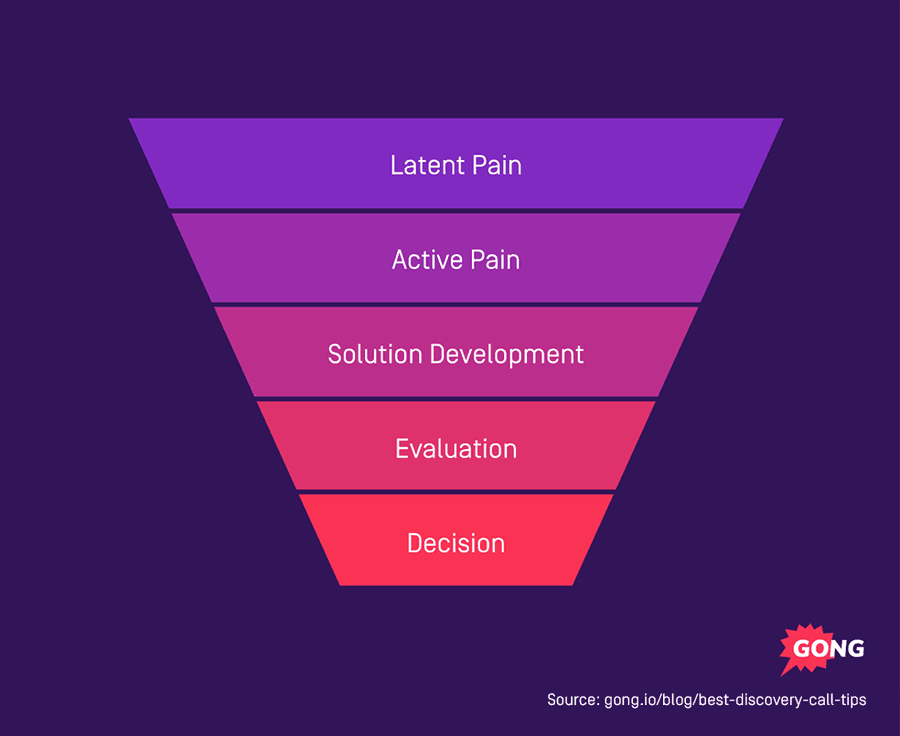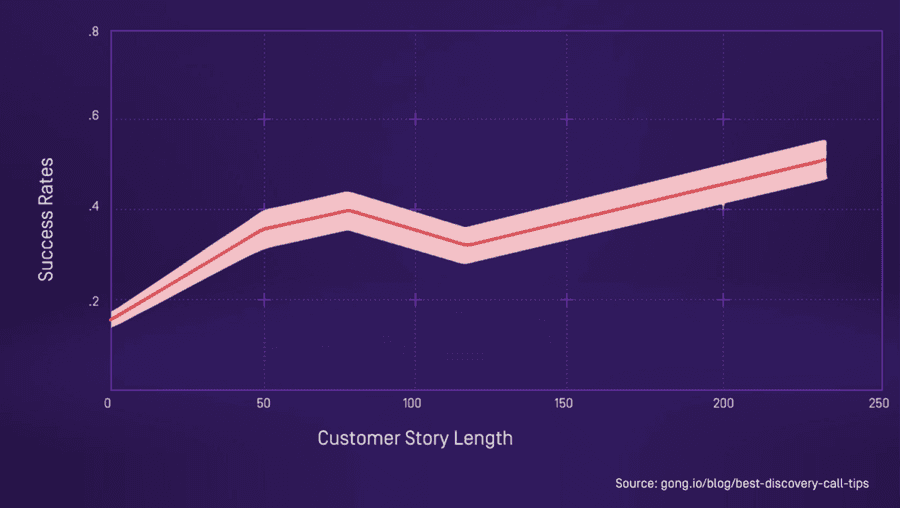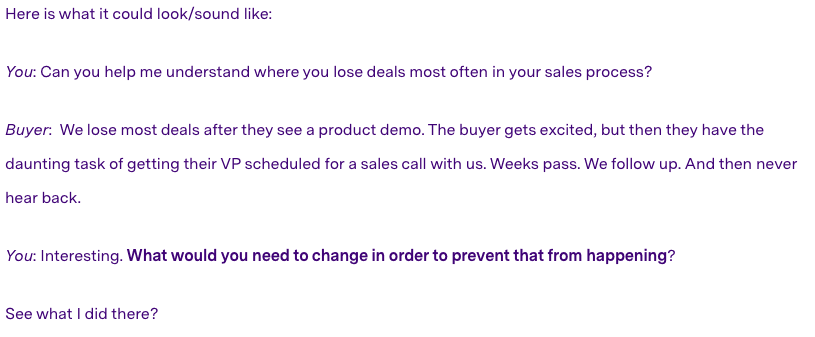Sales Discovery Questions To Pinpoint Real Pain
Curated from: gong.io
Ideas, facts & insights covering these topics:
10 ideas
·1.09K reads
2
Explore the World's Best Ideas
Join today and uncover 100+ curated journeys from 50+ topics. Unlock access to our mobile app with extensive features.
Asking More Questions Builds Emotional Intelligence
Asking (more, better) questions translates well to the most successful reps.
Too many sales discovery questions (15+), and you are running an interrogation. Too few, and you’re unlikely to unearth what matters – pain points.
Aim for between 11 and 14 targeted questions per call.
21
238 reads
Discovery Questions Should Respect Your Prospect’s Stage In The Buying Journey
A BDR will “follow the script” and ask, What’s your biggest strategic priority for this year? … when the buyer is already actively looking at products like yours – not the time for a diagnostic question, one that is asked to uncover pain.
Leading with a diagnostic question when a buyer is not in that stage is annoying and won’t get you very far in the building trust and rapport category.
21
173 reads
Sales Discovery Questions To Ask For “Latent Pain”
Latent pain: The first stage of the buyer’s journey.
The buyer is aware they have a problem but is not quite ready to do anything about it. Said another way, their business challenge is an annoyance, but not something worth investing time/resources/money into … yet.
During this stage, a question like “What do you hope to achieve by implementing a solution?” often plays well. It’s frictionless. It’s what they want to (or are willing to) talk about.
When considering latent pain questions, your goal is to uncover a potential fit between your buyer’s priorities and your solution.
18
133 reads
Sales Discovery Questions To Ask For “Active Pain”
It’s also entirely possible – even likely – a buyer will ENTER the funnel at this stage. Inbound leads – demo form fills, sales inquiries, chatbot “I’d like to speak with a sales rep” replies, and so on.
A buyer in the active pain stage has an evident, well-defined pain. They know something is broken and/or could be improved.
During this stage, You are the “sales doctor,” if you will. Your job is to evaluate the patient … err, buyer … uncover their symptoms, offer current fixes, and create a sense of urgency.
Any discrepancy here is more ammo you can use to move into impact questions.
19
99 reads
Sales Discovery Questions To Ask For “Solutions Development”
During the solution development stage, your buyer is gathering data and information. They want – need – to build their case for their boss, their team, and even themselves.
They need to justify if and how a solution will fix their problem.
Ask questions that get buyers to spell out the potential impact a solution like yours might have for your buyer.
19
85 reads
Sales Discovery Questions For “Evaluation”
It’s the time when your buyer is actively considering your product.
This is what BDRs live for – when the buyer moves from “thinking about it” to ask their own questions.
During the evaluation stage, buyers think through pricing, contract options, and feature sets, and focus on potential ROI.
This is also when they may bring in other team members to ask questions and see the solution in action, though that’s often reserved for the next stage (The Decision).
Your job as a salesperson is to glean as much information as possible about their expectations.
19
71 reads
Sales Discovery Questions For The “Decision” Stage
To demo or not to demo. That is the decision during a sales discovery call.
A “yes to demo” moves the buyer out of the discovery phase of the journey and into an active sales contact.
Decisions are made by the committee. Understanding who’s a part of the decision and what their priorities are can make or break your deals.
17
70 reads
Sales Discovery Questions That Trigger Long Responses
One-word responses to discovery questions are THE WORST.
The data prove it out. According to Gong Labs, there’s a strong link between buyers’ response lengths and closed deals.
The key: Provide your buyer the signal(s) that you want a lengthy response by asking open-ended questions.
Consider the following question starters to draw out a longer, richer, more in-depth response from your buyer:
- Can you help me understand …?
- Can you walk me through …?
- Can you tell me about …?
20
79 reads
Sales Discovery Questions That Use Their Words
Using your prospect’s own words.
We call this technique mirroring: repeating the last 2-3 words or the most critical words your prospect says.
But it’s not just repeating a few words. You also need to turn their words into a question by upwardly inflecting their phrase, so it sounds like a question.
And then stop talking. Just listen.
19
70 reads
Sale Discovery Questions Based On What They Said
A sales discovery call is a conversation, a discussion. It is not an interrogation.
So don’t start a new thread with each question. Instead, go deep. Your follow-up question should be natural – again, like a real conversation.
Base your next question on what your buyer just told you. Your discovery call questions should feel spontaneous.
Lastly, ask questions that lead to “next steps”.
Ending a call without the next steps is like ending a blog post without a call to action.
You are left with a bit of an empty feeling.
18
72 reads
IDEAS CURATED BY
CURATOR'S NOTE
The best reps ask the best questions.
“
Nicole Griffin's ideas are part of this journey:
Learn more about marketingandsales with this collection
Leonardo da Vinci's creative process
How to approach problem-solving like da Vinci
The importance of curiosity and observation
Related collections
Similar ideas
7 ideas
3 ideas
The Anatomy of a Perfect Discovery Call
medium.com
Read & Learn
20x Faster
without
deepstash
with
deepstash
with
deepstash
Personalized microlearning
—
100+ Learning Journeys
—
Access to 200,000+ ideas
—
Access to the mobile app
—
Unlimited idea saving
—
—
Unlimited history
—
—
Unlimited listening to ideas
—
—
Downloading & offline access
—
—
Supercharge your mind with one idea per day
Enter your email and spend 1 minute every day to learn something new.
I agree to receive email updates










